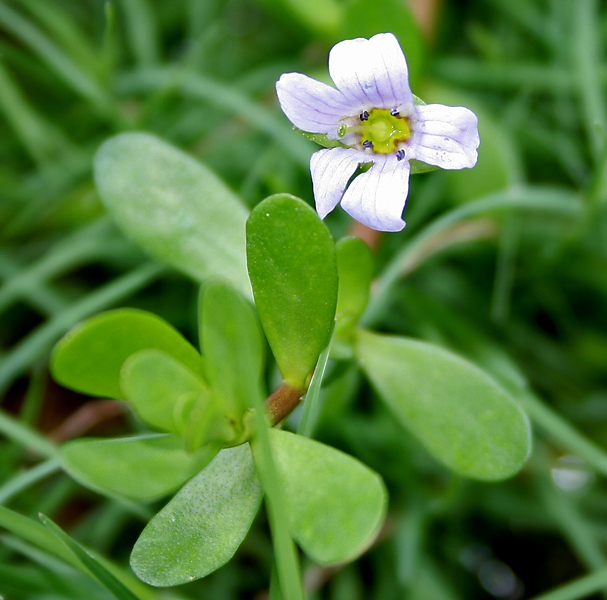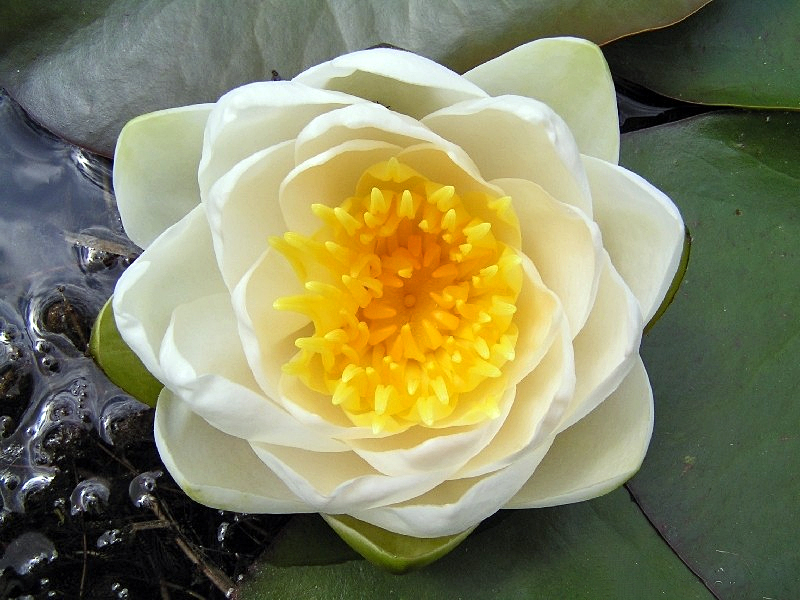|
Bacopa
''Bacopa'' is a genus of 60 aquatic plants belonging to the family Plantaginaceae. It is commonly known as waterhyssop (or water hyssop, though this is more misleading as ''Bacopa'' is not very closely related to hyssop but simply has a somewhat similar Morphology (biology), appearance). Description They are Annual plant, annual or Perennial plant, perennial, with decumbent or erect stems. The leaves are opposite or whorled, and Sessility (botany), sessile. The leaf blade is regular, round to linear, and the venation is palmate or pinnate. Its Plant stem, stems are hairy or smooth. The flowers are produced solitary or in pairs from leaf axils, usually radially symmetrical, with five sepals and five petals, and they are usually white, blue, or purple. Dispersal and propagation is by seeds and stem fragments. Crushed leaves have a distinctive 'lemon' scent. Habitat and range ''Bacopa'' species are found in tropical and subtropical regions of the world, particularly the America ... [...More Info...] [...Related Items...] OR: [Wikipedia] [Google] [Baidu] |
Bacopa Monnieri
''Bacopa monnieri'', also known as water hyssop, brahmi, thyme-leafed gratiola, herb of grace, and Indian pennywort, is a perennial, creeping herb native to wetland areas globally. It is used in Ayurveda. In 2019, the US Food and Drug Administration (FDA) warned manufacturers of dietary supplement products containing ''Bacopa monnieri'' against making illegal and unproven claims that the herb can treat various diseases. There is inconclusive evidence of it improving cognitive performance and memory, and its safety and effectiveness remain uncertain. Description ''Bacopa monnieri'' is a non-aromatic herb. The leaves of this plant are succulent, oblong, and thick. Leaves are oblanceolate and are arranged oppositely on the stem. The flowers are small, actinomorphic and white, with four to five petals. It can even grow in slightly brackish conditions. Propagation is often achieved through cuttings. Ecology ''Bacopa monnieri'' is one of the most widespread ''Bacopa'' species. ... [...More Info...] [...Related Items...] OR: [Wikipedia] [Google] [Baidu] |
Plantaginaceae
Plantaginaceae, the plantain family or veronica family, is a large, diverse family (biology), family of flowering plants in the order Lamiales that includes common flowers such as Antirrhinum, snapdragon and Digitalis, foxglove. It is unrelated to the true plantains, banana-like fruit also called "plantain". In older classifications, Plantaginaceae was the only family of the order Plantaginales, but numerous phylogenetic studies, summarized by the Angiosperm Phylogeny Group, have demonstrated that this taxon should be included within Lamiales. Overview The plantain family as traditionally circumscribed consisted of only three genera: ''Bougueria'', ''Littorella'', and ''Plantago''. However phylogenetic research has indicated that Plantaginaceae ''sensu stricto'' (in the strict sense) were nested within Scrophulariaceae (but forming a group that did not include the type genus of that family, ''Scrophularia''). Although Veronicaceae (1782) is the oldest family name for this group, ... [...More Info...] [...Related Items...] OR: [Wikipedia] [Google] [Baidu] |
Morphology (biology)
Morphology (from Ancient Greek μορφή (morphḗ) "form", and λόγος (lógos) "word, study, research") is the study of the form and structure of organisms and their specific structural features. This includes aspects of the outward appearance (shape, structure, color, pattern, size), as well as the form and structure of internal parts like bones and organs, i.e., anatomy. This is in contrast to physiology, which deals primarily with function. Morphology is a branch of life science dealing with the study of the overall structure of an organism or taxon and its component parts. History The etymology of the word "morphology" is from the Ancient Greek (), meaning "form", and (), meaning "word, study, research". While the concept of form in biology, opposed to function, dates back to Aristotle (see Aristotle's biology), the field of morphology was developed by Johann Wolfgang von Goethe (1790) and independently by the German anatomist and physiologist Karl Fried ... [...More Info...] [...Related Items...] OR: [Wikipedia] [Google] [Baidu] |
Seeds
In botany, a seed is a plant structure containing an embryo and stored nutrients in a protective coat called a ''testa''. More generally, the term "seed" means anything that can be sown, which may include seed and husk or tuber. Seeds are the product of the ripened ovule, after the embryo sac is fertilized by sperm from pollen, forming a zygote. The embryo within a seed develops from the zygote and grows within the mother plant to a certain size before growth is halted. The formation of the seed is the defining part of the process of reproduction in seed plants (spermatophytes). Other plants such as ferns, mosses and liverworts, do not have seeds and use water-dependent means to propagate themselves. Seed plants now dominate biological niches on land, from forests to grasslands both in hot and cold climates. In the flowering plants, the ovary ripens into a fruit which contains the seed and serves to disseminate it. Many structures commonly referred to as "seeds" are actuall ... [...More Info...] [...Related Items...] OR: [Wikipedia] [Google] [Baidu] |
Plants Of The World Online
Plants of the World Online (POWO) is an online taxonomic database published by the Royal Botanic Gardens, Kew. History Following the Convention on Biological Diversity, the Royal Botanic Gardens in Kew launched Plants of the World Online in March 2017 with the goal of creating an exhaustive online database of all seed-bearing plants worldwide. (Govaerts wrongly speaks of "Convention for Botanical Diversity (CBD)). The initial focus was on tropical African flora, particularly flora ''Zambesiaca'', flora of West and East Tropical Africa. Since March 2024, the website has displayed AI-generated predictions of the extinction risk for each plant. Description The database uses the same taxonomical source as the International Plant Names Index, which is the World Checklist of Vascular Plants (WCVP). The database contains information on the world's flora gathered from 250 years of botanical research. It aims to make available data from projects that no longer have an online ... [...More Info...] [...Related Items...] OR: [Wikipedia] [Google] [Baidu] |
Aquatic Plant
Aquatic plants, also referred to as hydrophytes, are vascular plants and Non-vascular plant, non-vascular plants that have adapted to live in aquatic ecosystem, aquatic environments (marine ecosystem, saltwater or freshwater ecosystem, freshwater). In lakes, rivers and wetlands, aquatic vegetations provide cover for aquatic animals such as fish, amphibians and aquatic insects, create substrate (marine biology), substrate for benthic invertebrates, produce oxygen via photosynthesis, and serve as food for some herbivorous wildlife. Familiar examples of aquatic plants include Nymphaeaceae, waterlily, Nelumbo, lotus, duckweeds, mosquito fern, floating heart, water milfoils, Hippuris, mare's tail, water lettuce, water hyacinth, and algae. Aquatic plants require special adaptation (biology), adaptations for prolonged inundation in water, and for buoyancy, floating at the water surface. The most common adaptation is the presence of lightweight internal packing cells, aerenchyma, but floa ... [...More Info...] [...Related Items...] OR: [Wikipedia] [Google] [Baidu] |
Algae
Algae ( , ; : alga ) is an informal term for any organisms of a large and diverse group of photosynthesis, photosynthetic organisms that are not plants, and includes species from multiple distinct clades. Such organisms range from unicellular microalgae, such as cyanobacteria, ''Chlorella'', and diatoms, to multicellular macroalgae such as kelp or brown algae which may grow up to in length. Most algae are aquatic organisms and lack many of the distinct cell and tissue types, such as stomata, xylem, and phloem that are found in embryophyte, land plants. The largest and most complex marine algae are called seaweeds. In contrast, the most complex freshwater forms are the Charophyta, a Division (taxonomy), division of green algae which includes, for example, ''Spirogyra'' and stoneworts. Algae that are carried passively by water are plankton, specifically phytoplankton. Algae constitute a Polyphyly, polyphyletic group because they do not include a common ancestor, and although Eu ... [...More Info...] [...Related Items...] OR: [Wikipedia] [Google] [Baidu] |



